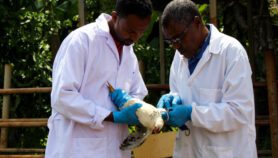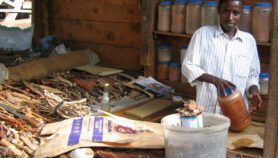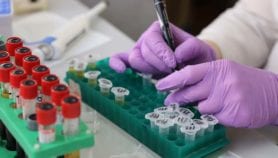By: Jia Hepeng
Send to a friend
The details you provide on this page will not be used to send unsolicited email, and will not be sold to a 3rd party. See privacy policy.
[BEIJING] An online database of traditional Tibetan medicines has been launched in China.
The free access database, launched on 24 February, is a joint effort by two institutes of the Chinese Academy of Sciences (CAS): the Northwest Institute of Plateau Biology, based in Xining — a city populated largely by ethnic Tibetans — and the Lanzhou-based Scientific Information Center for Resources and Environment.
The database has 3,000 distinct entries covering Tibetan pharmaceutical resources, traditional prescriptions, ancient and modern literature about Tibetan medicine, and details of Tibetan medical experts and institutions that research or prescribe Tibetan medicines.
According to ancient texts, Tibetan medicine uses more than 2,085 plants. So far, records of 2,294 traditional prescriptions are available through the database, including 300 that are commonly used in Tibet and by ethnic Tibetans in China.
"Our database aims to better protect, standardise and utilise the indigenous heritage of the Tibetan people," says Ma Jianxia, the database’s progamme director and a research fellow at the Lanzhou centre.
Among the information included are details of the names of plants used in Tibetan medicine, where they are found, and how to identify, collect, store and cultivate them.
The database also details the plants’ pharmaceutical effects, including any toxins they contain.
According to Ma, research institutes and hospitals offering Tibetan medicine, which were invited to test the database as it was being developed, have welcomed the initiative. Ma adds that many Tibetan doctors and researchers volunteered to help refine the material.
The two institutes involved in the programme are funding the database at a cost of about one million yuan (US$120,000).
Although the database is currently available only in Chinese and Tibetan, Ma says she and her colleagues are seeking sponsors to develop it into a comprehensive multilingual website and add news, views and other information about Tibetan drugs.
She adds that all the information on the database come from the ancient pharmaceutical literature of Tibet.
However, she admits that the database developers have yet to consider the intellectual property implications of making indigenous Tibetan knowledge freely available on the Internet.
Read more about indigenous knowledge and intellectual property in SciDev.Net’s indigenous knowledge and intellectual property dossiers.













